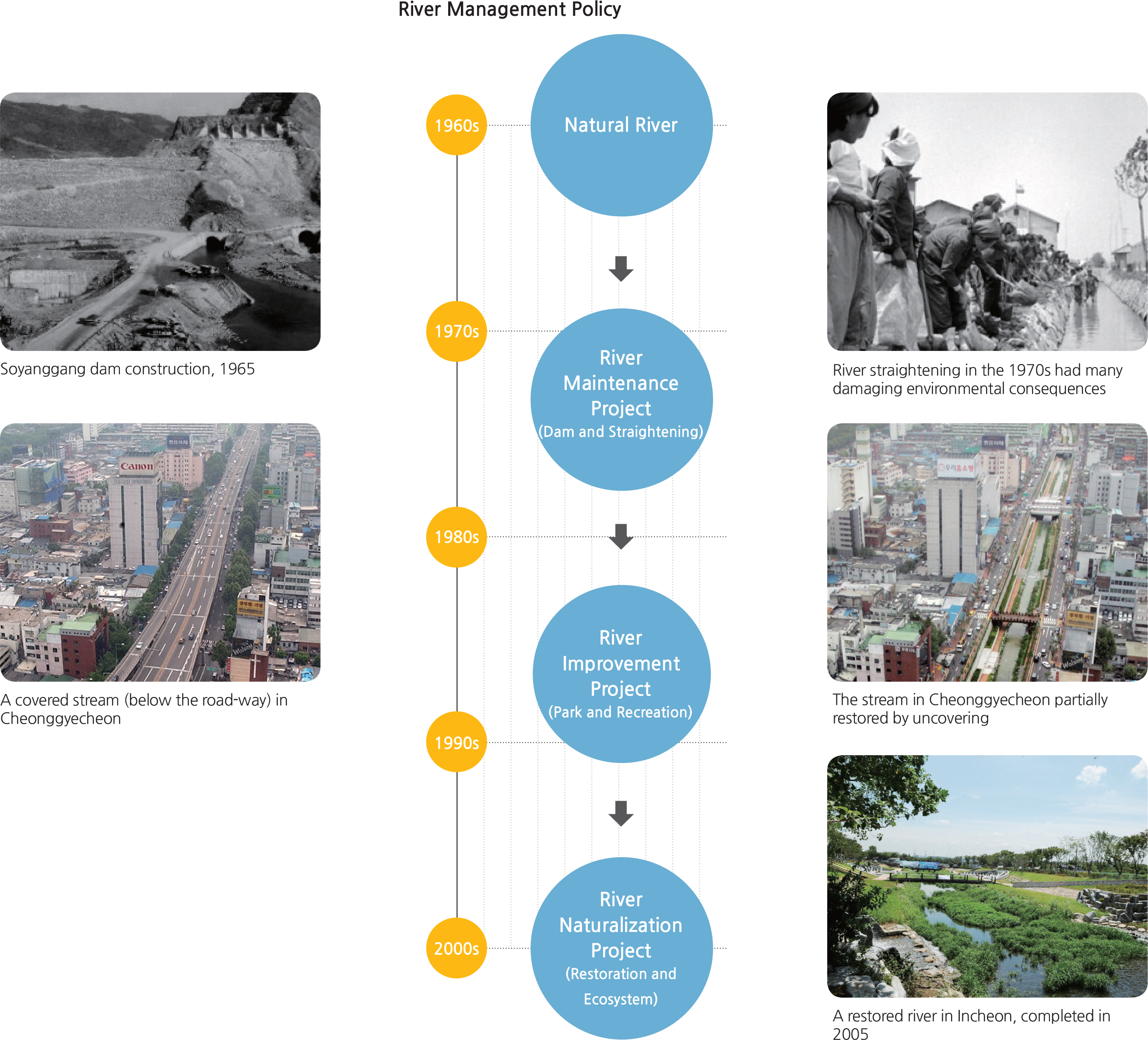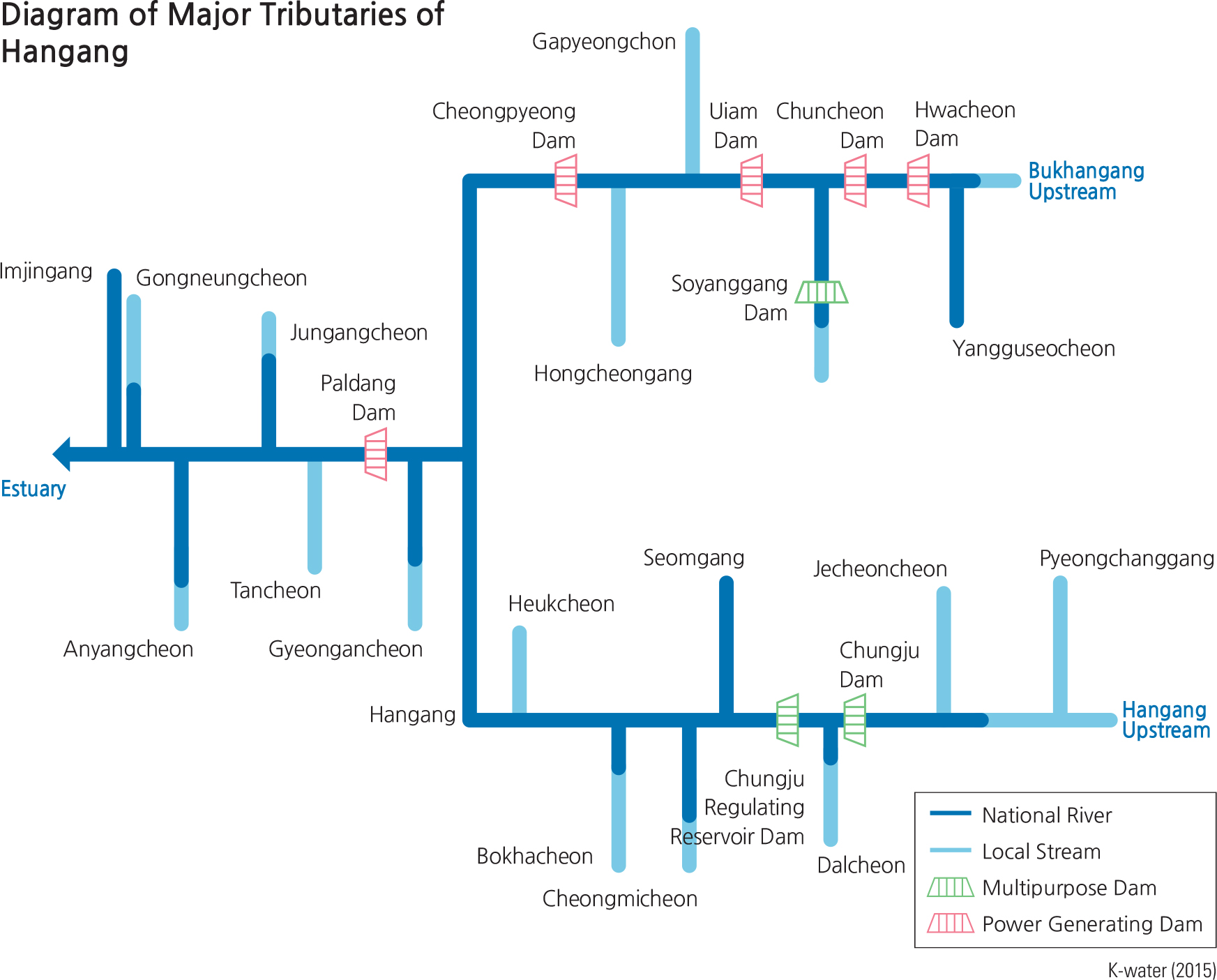for Children
Until the 1960s most rivers in Korea were in their natural form. However, during the rapid urbanization of the 1970s many streams were covered or re-routed. In rural areas many meandering channels were straightened and dams were constructed for irrigation, drinking water, and hydroelectricity. As environmental issues gained light in the 1990s various improvement projects, such as the construction of waterfront parks and promenades, were started in areas around rivers. In the 2000s, people began to recognize the ecological value of rivers and wetlands and projects were started to restore rivers to their natural form. As an example, the Aquatic Ecosystem Restoration Project developed the Physical River Naturalness Index (PRNI) to help identify streams most critically in need of conservation and restoration. Stream classifications range from badly damaged to natural. Stream restoration efforts improve water quality, decrease flooding hazards, and improve habitat for aquatic animals such as fish. Fish habitat maps are useful for monitoring fish populations and identifying potential threats.
|

